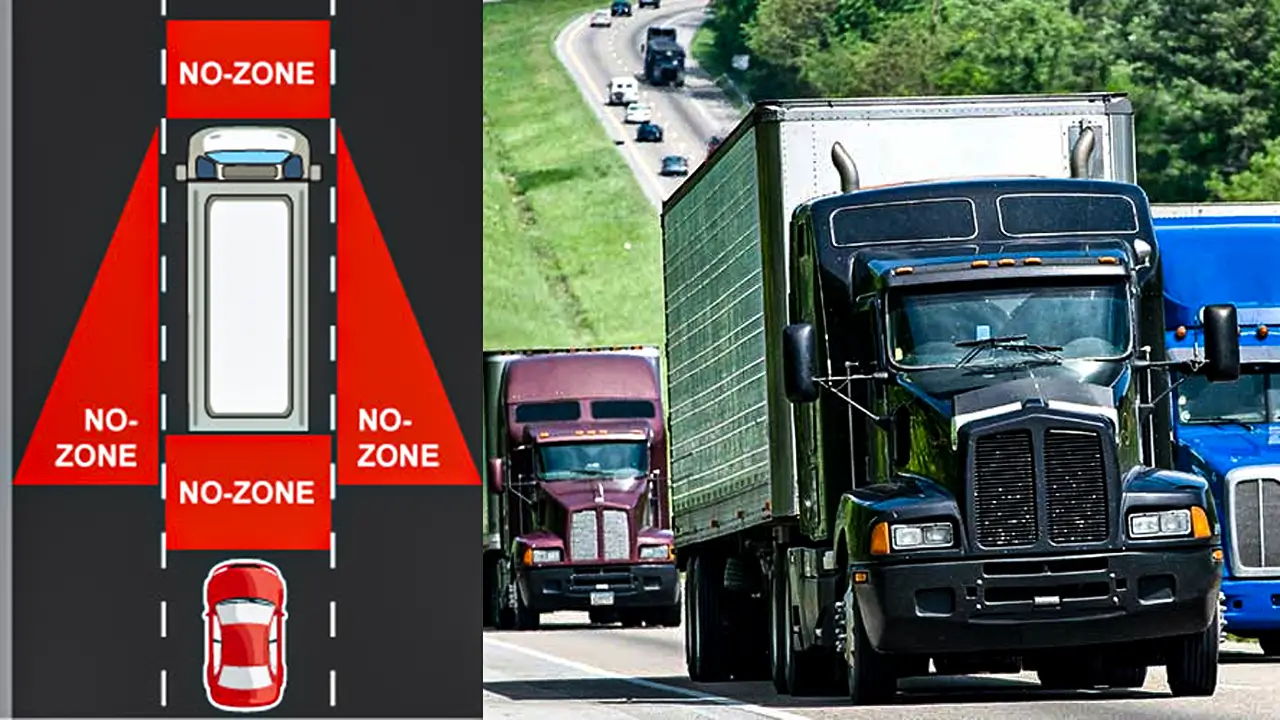Sharing the road with large trucks and recreational vehicles (RVs) requires thought and sensitivity. These vehicles have particular constraints and are large and slower than standard cars. Knowing how to interact with them safely could help everyone drive more safely and with fewer accidents. Here are some things to keep in mind.
How to Stay Safe Around Large Trucks and RVs on the Road
Understand Blind Spots
Vehicles with extensive blind zones include RVs and trucks. Blind spots are regions outside of a car’s field of vision. Trucks have blind spots on the front, rear, and sides. The driver is unlikely to spot you if you are unwilling to view the side mirrors. Steer clear of spending too much time in these blind areas. Move swiftly and cautiously if you must pass.
Give Them More Space
Larger cars require more room to maneuver when changing lanes or turning. Trucks, for instance, need room to turn in a wide circle. Avoid getting too close to a car or RV. If they have to turn, they could swing out at any time. To prevent it from colliding with your vehicle, ensure enough space between it and your car.
Be Careful When Passing
Never pass an RV or car on the left side. The right side of these enormous trucks usually has a big blind area. When ready to pass, indicate and go as quickly as possible without going too quickly. Once you pass, do not immediately return to the lane in front of the truck. Wait until you can see the entire car in your rearview mirror before moving back over. It enables the truck to stop when needed.
Do not Cut Them Off
When you suddenly slow down after cutting in front of a truck or RV, the driver may not stop in time. It can lead to an accident. Always give them plenty of space before changing lanes or turning in front of them.
Be Patient
RVs and trucks are frequently slower than cars, particularly when turning onto roads or climbing hills. Be patient. You should not follow or hoot at someone who is moving slowly. Recall that these cars are heavier and require more time to accelerate. Rushing them could get you into risky situations. Waiting for a safe opportunity to pass is preferable to hurrying.
Stay Alert in Bad Weather
Driving is more difficult for everyone when there is bad weather, such as rain or snow. Due to size, huge trucks and RVs become even more challenging. They have trouble seeing the road and stop more slowly. In inclement weather, stay a safe distance away from these vehicles. Avoid dangerous circumstances with them and move if trouble maintains control.
- Audi GT50 Concept: A Loud Reminder of Why Car Enthusiasts Fell in Love With Audi
- Nearly 30% of UK Drivers Believe Car Tax Should Be Based on Mileage — Survey
- Why Planes and Boats Escaped the Luxury Tax But Cars Didn’t
- Australia’s Headlight Confusion: Authorities Warn Drivers After Viral $250 Headlight Rule Goes Wild Online
- 2025 Hyundai Venue Facelift Launched in India – Full Details, Variants, and Price
Watch for Wide Turns
Trucks occasionally need to make wide turns, especially when turning right. Attempting to press a vehicle from the right side is not recommended. A large vehicle may swing into your lane during a turn; trying to pass it could result in an accident.
Do not Tailgate
It is risky to follow a large vehicle or RV too closely. Being too close will prevent the motorist from seeing you and give you less time to respond in the event of an abrupt halt. Always maintain a safe distance behind big cars. As a general guideline, try to keep a minimum of four seconds distance behind them.
